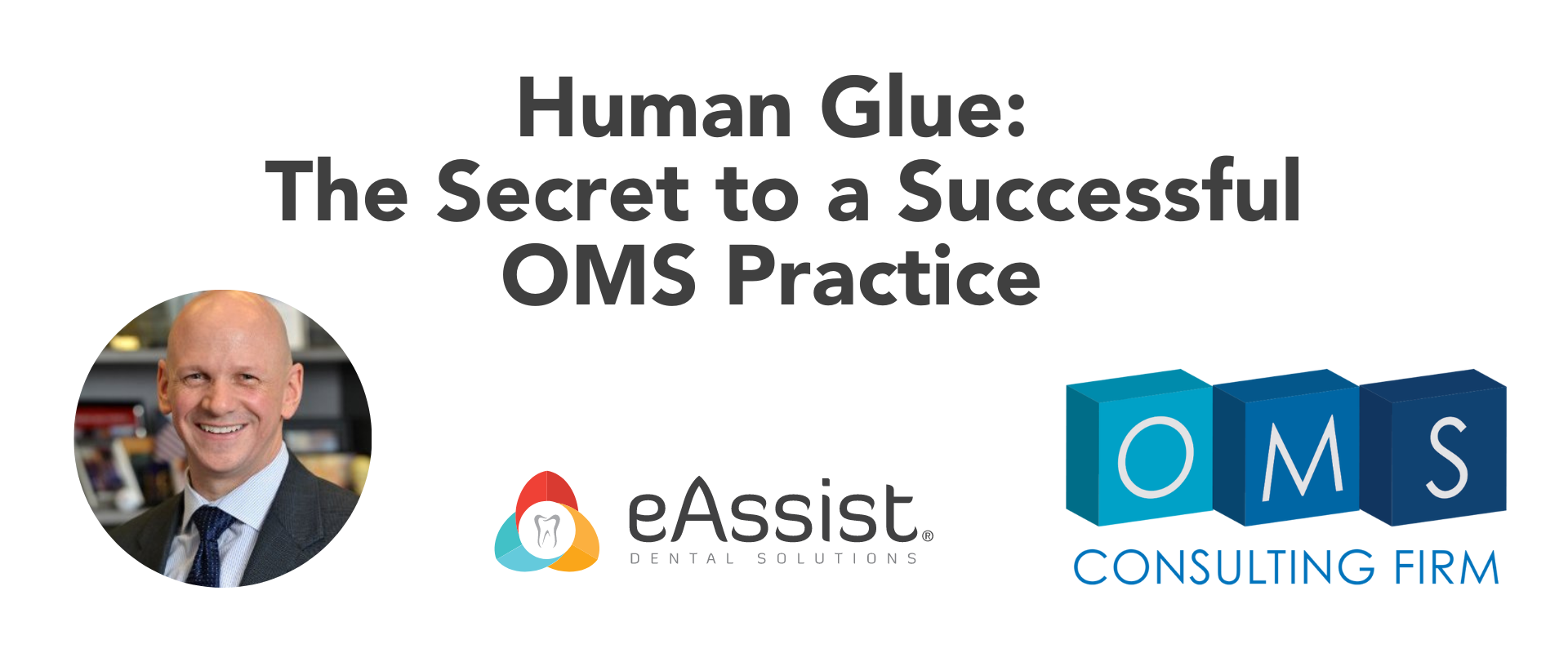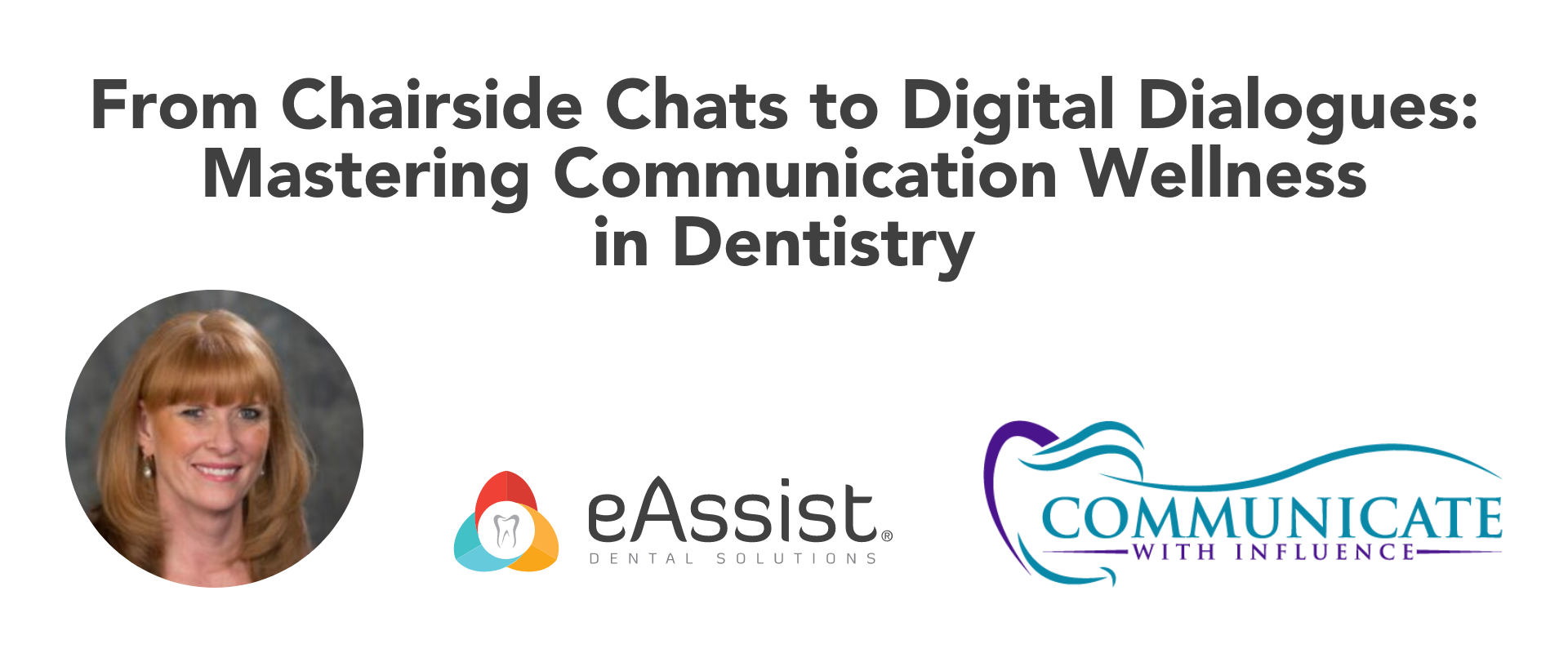I am a big Beatles fan. One of my favorite songs from the Abbey Road album is “The End.” I think about this lyric all the time: “And in the end, the love you take is equal to the love you make.” In working with oral and maxillofacial surgery practices, we’ve discovered a common dominator among the best practices. What’s the secret? Human glue. The amount of time providers and managers invest in their employees and practice will equal the overall success of their practice. The secret sauce ingredients go something like this:
Human Glue
Serving size: 1 practice
- 8 hours per month communicating with your employees
- Continuous review of practice values
- Constantly updating guidelines for how employees should interact with patients and co-workers in their roles
- Fold in reminding employees about practice culture, attitudes, tacitly understood rules, shared learning, and guiding staff engagement.
The Role of Human Glue in the Practice
A successful OMS practice is one where employees feel a sense of belonging and connection. Human glue fosters trust, respect, and cooperation among EVERYONE. When employees feel connected to one another, they are more likely to work together towards common goals and achieve greater success. Human glue helps to establish a culture of inclusivity and promotes a sense of ownership and responsibility within the practice.
The Importance of Human Glue in the Practice
Human glue is not only essential for building trust with providers, managers, and co-workers but also for creating a successful practice. In today’s fast-paced and competitive business environment, practices need to retain employees who are not only skilled but also connected to the practice’s culture and values. When employees feel a sense of belonging and connection to their colleagues and practice, they are more likely to be engaged, productive, and committed to their work.
Human glue also plays a critical role in fostering collaboration and teamwork in the practice. By promoting a culture of inclusivity and trust, individuals are more likely to share ideas and work together towards common goals. This results in better problem-solving, higher creativity, and increased innovation.

The Impact of Technology on Human Glue
Technology has changed the way practices market to patients and gain referrals. Social media platforms, for instance, can be used to connect with patients and build online communities. Video conferencing tools can be used to facilitate remote collaboration with referring providers and create teamwork. This technology can also be used to strengthen human glue by facilitating communication and collaboration.
The Role of Continued Employee Education and Training Fostering Human Glue
Providers and managers must know that continued employee education and training play a critical role in creating human glue by providing employees with the skills and knowledge needed in their current roles. Continued education and training promote empathy, understanding, and respect, reduce turnover, and help employees build stronger relationships with others.
Moreover, employee education and training can also promote diversity and inclusivity by exposing employees to different cultures and perspectives. This helps to break down barriers and promotes a sense of understanding and acceptance within the practice.
In conclusion, human glue plays a critical role in building strong bonds between providers, managers, and employees that lead to successful practices. But it takes time, and the time you devote to creating human glue has a direct connection to the level of positive outcomes you will see.
About the Author

Scott E. Graham, MHA, FACMPE, FAADOM partners with OMS clients in all areas of practice management, including start-ups, buy-ins, recruitment, physician onboarding, exit strategies, reimbursement enhancement, human resources staffing and management, compliance,
coding/billing, revenue cycle improvement, practice financial modeling, governance documentation, policy and procedure development, process implementation, and process improvement training. He also helps OMS clients in practice sales and transitions.
He is a founder of the SOMSA formally known as, JAWS Society, a national not-for-profit professional organization for OMS practice administrators. He has presented on practice management best practices at local, regional, and national conferences, and he has written
articles on OMS practice management topics as well as how to start a national not-for-profit professional organization, establish an OMS Fellowship Program and attract top dental talent. He also co-authored a textbook chapter about OMS practice management and business in the 3rd edition of Fonseca’s Oral and Maxillofacial Surgery.
Graham holds a Master’s degree in Health Administration, and he is board-certified in the American College of Medical Practice Executives (FACMPE) and the American Association of Dental Office Managers (FAADOM).
He is an active member of the Medical Group Management Association, American College of Healthcare Executives, American Association of Dental Office Managers, National Society for Certified Healthcare Business Consultants, and the American Association of Oral and Maxillofacial Surgeons.






0 Comments